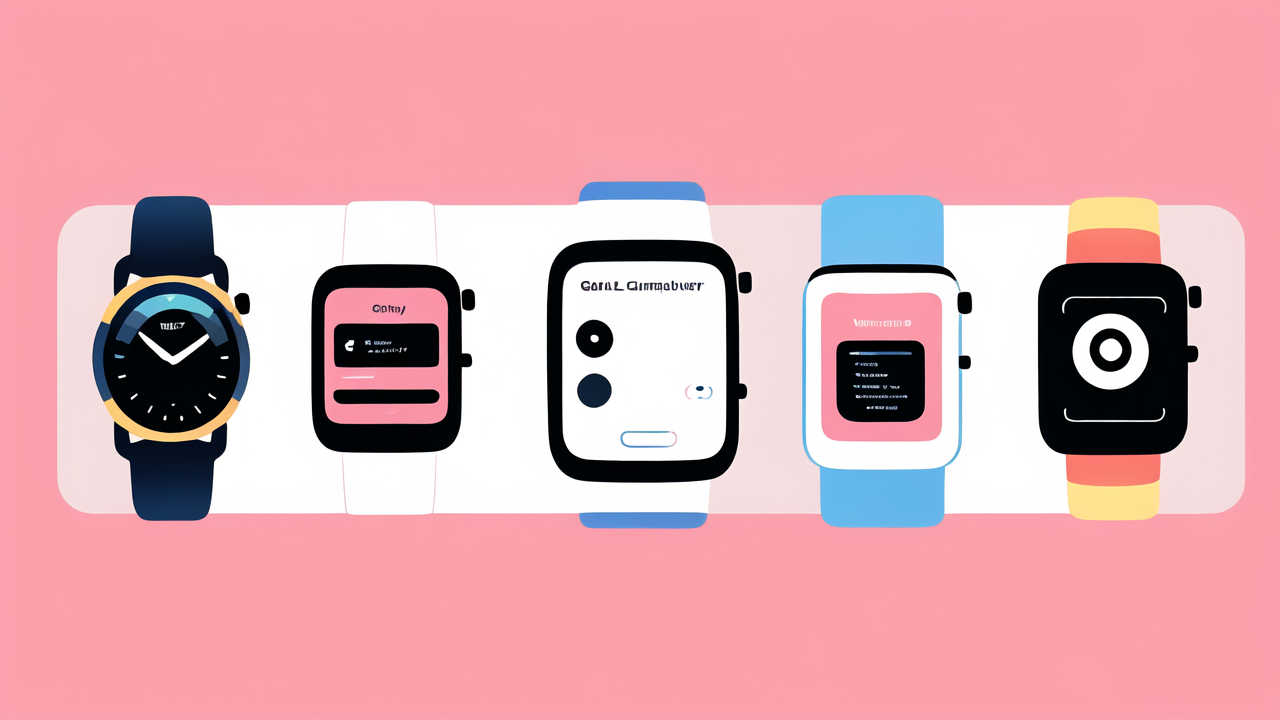Understanding the Difference: Smart Bracelets vs. Smart Watches
Key Features of Smart Bracelets
Smart bracelets are slim, lightweight devices worn on the wrist. They focus on basic fitness tracking. These gadgets typically monitor steps, calories burned, and sleep patterns. Many smart bracelets have long battery life, often lasting a week or more. They usually lack screens or have small displays. This makes them ideal for those who want simple, unobtrusive tracking. Smart bracelets are great for people new to fitness tech or those who prefer minimal devices.

Key Features of Smart Watches
Smart watches offer more features than bracelets. They have larger screens for easy viewing. Most can display notifications from your phone. They often include GPS for accurate activity tracking. Many smart watches allow users to make calls and send texts. They can store and play music, too. Some advanced models monitor heart rate and blood oxygen levels. Smart watches usually have shorter battery life due to their many functions. They're perfect for tech-savvy users who want a multi-purpose device.
Advantages of Wearing a Smart Bracelet
Smart bracelets are user-friendly and low-maintenance. They're great for tracking basic fitness goals. The long battery life means less frequent charging. Their simple design makes them comfortable for all-day wear. Smart bracelets are often water-resistant, suitable for swimming or showering. They're usually more affordable than smart watches. This makes them a good choice for budget-conscious buyers. Smart bracelets are ideal for those who want to track fitness without distractions.
Advantages of Wearing a Smart Watch
Smart watches offer a wide range of features beyond fitness tracking. They serve as an extension of your smartphone. You can check messages, emails, and calendar events on your wrist. Many allow you to make payments or control smart home devices. Smart watches often have more accurate sensors for detailed health monitoring. They're great for athletes who need in-depth data. The larger screen makes it easy to view stats and notifications. Smart watches are perfect for those who want a all-in-one device on their wrist.
Selecting the Right Fitness Partner: A Look at Top-Rated Smart Bracelets and Watches
Smart Bracelets: Best for Tracking Daily Activities
Smart bracelets excel at tracking everyday activities. They're perfect for counting steps and monitoring sleep. Popular models like the Fitbit Inspire 2 offer great value. It tracks steps, calories, and sleep quality. The Xiaomi Mi Band 6 is another top choice. It has a color screen and tracks 30 different activities. The Garmin Vivosmart 4 is great for swimmers. It's water-resistant and can track pool workouts. These devices are ideal for those starting their fitness journey. They provide motivation without overwhelming users with data.

Smart Watches: Best for Detailed Fitness Analysis
Smart watches offer more detailed fitness analysis. The Apple Watch Series 7 is a top choice for iPhone users. It tracks a wide range of activities and has built-in GPS. The Garmin Forerunner 945 is perfect for serious athletes. It offers advanced metrics like VO2 max and recovery time. The Samsung Galaxy Watch 4 is great for Android users. It has a body composition feature to track muscle and fat percentages. These watches provide in-depth data for those who want to optimize their workouts.
Integrating Technology with Lifestyle: User-Friendly Devices
Both smart bracelets and watches are designed to be user-friendly. They often have companion apps for easy data viewing. Many devices allow you to set goals and receive reminders. Some offer guided workouts or meditation sessions. The key is finding a device that fits your lifestyle. Consider factors like battery life and water resistance. Think about whether you need constant connectivity. Choose a device with features you'll actually use. The best wearable is one that seamlessly integrates into your daily routine.
From Fitness Enthusiasts to Casual Users: Catering to Diverse Needs
Tailoring Your Fitness Regime with Smart Bracelets and Watches
Smart bracelets and watches can help tailor your fitness regime. They track your progress and provide insights. This data can help you set realistic goals. Many devices offer personalized workout suggestions. They can remind you to move if you've been sitting too long. Some advanced watches can create custom training plans. These plans adapt based on your performance and recovery. For casual users, even basic step tracking can be motivating. The key is to use the data to make small, positive changes in your daily habits.

Enhancing Personal Well-being: Non-Fitness Benefits of Wearable Technology
Wearable tech offers benefits beyond fitness tracking. Many devices now include stress monitoring features. They can guide you through breathing exercises to reduce anxiety. Sleep tracking helps you understand your rest patterns. This can lead to better sleep quality and overall health. Some watches offer menstrual cycle tracking for women's health. Many devices can detect irregular heart rhythms, potentially saving lives. The social features of fitness apps can provide motivation and support. These non-fitness benefits make wearables valuable tools for overall well-being.
Future Trends in Fitness Wearables: What to Expect in the United States Market
The U.S. fitness wearable market is constantly evolving. We can expect to see more advanced health monitoring features. Future devices may track blood sugar levels without needles. Improved sensors could provide more accurate calorie burn estimates. We might see wearables that can detect early signs of illness. Artificial intelligence could offer more personalized health insights. Battery life will likely improve, allowing for longer use between charges. Integration with other smart devices will become more seamless. As technology advances, wearables will play an even bigger role in preventive healthcare.




Leave a comment
This site is protected by hCaptcha and the hCaptcha Privacy Policy and Terms of Service apply.